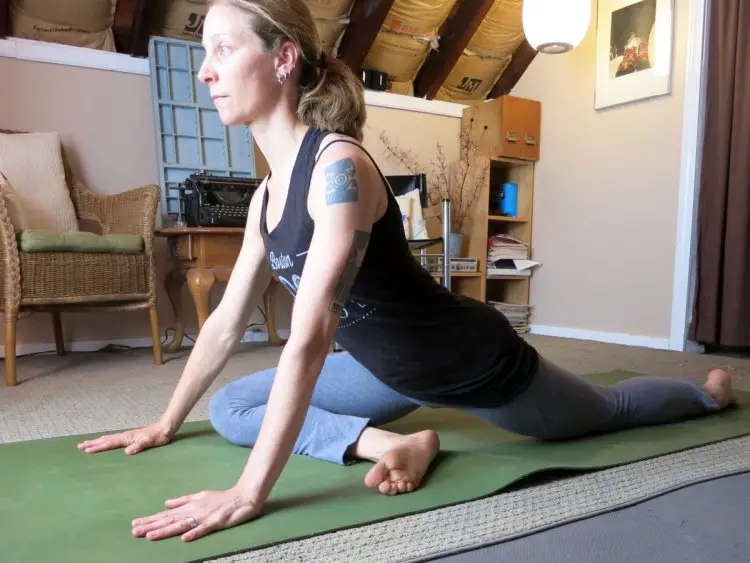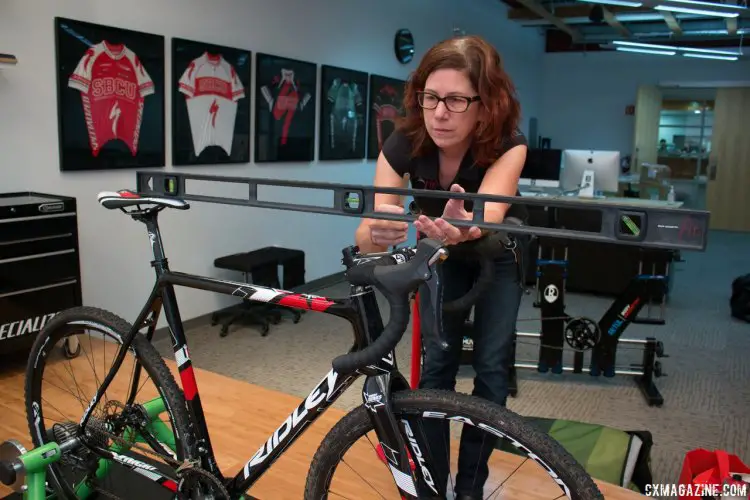Got ’cross back? It’s such a common issue that we spent a good amount of time on it in Issue 16 (available digitally or in print). For today’s Training Tuesday column, Coach Chris Mayhew of JBV Coaching has got your back. Mayhew is quite familiar with back issues that plague cyclocross racers and stresses prevention for racers not familiar with such pain.
This piece originally ran last year, but Coach Mayhew has updated it to include new links he has found during the past week.
There are two kinds of ’crossers: those who have back problems and those who will. It seems particularly common for people in their early thirties. Cyclocross is incredibly hard on backs. It’s a limiter for almost everyone at some point either within a season or within their career. However, despite the seeming inevitability of the issue, many people seem unable to deal with the issue or unaware that it may affect them some day. What do you need to do, and what can you do, to avoid a season-ending injury?

Can you see how cyclocross is hard on the back, whether you’re on or off the bike? photo: Tom Burke running after Lasley and Shriver up the Heckle Hill, and would finish third. Masters 35-39, 2016 Cyclocross National Championships. © Cyclocross Magazine
The Best Time is Now
As the saying goes, the best time to plant a tree is twenty years ago. The next best time is now. Get started on a program of regular self-care now. It doesn’t have to be an elaborate time-consuming routine for which need to leave the house for. Get started on some action that you take on a frequent basis that is focused on addressing possible problem points.
Your training load is greatly reduced this time of year, allowing you to hopefully take some of that time and put it towards allowing yourself to always have access to all the fitness you’ve gained.
There are a million different routines you can start on. Mainly I just want you to do something, anything. Try yoga [See this Training Tuesday piece from Mayhew, and this one from Mo Bruno Roy –Ed.], or check out these videos or foam rolling (which I have also found to be nice ab work as well).

Working on your core and back with the Pigeon Pose. photo: Mo Bruno Roy goes through her post-race yoga routine in a previous Training Tuesday
Once you start with a plan you can start exploring what works for you specifically and what doesn’t. It’s going to be very individualized, so try a lot of different things and keep what works for you. Eventually, you’ll find a few key things that work that are easy to do on a regular basis. It will take some experimentation, for sure. It’s hard to find what works when your problem has already flared up and you’re dealing with both acute and long-term issues. Starting now lets you have a plan in place for when things get worse. Long term, it will help you head off problems at the pass by being proactive when symptoms start to flare up but aren’t debilitating.
As Kelly Starrett says, everyone should be doing 10 minutes of basic human maintenance per day. I’d argue more than that.
Find and Address Your Limiters
When you start on some sort of self-care routine, hopefully it will help you find the proximate cause of your issue. Is is your IT band(s)? Overly tight hamstrings, quads or hip flexors? Weak glutes? A lack of core strength? What’s causing back pain can be a complicated issue and there may be more than one cause.
Once you start finding what works for you, you can work backwards and find out what’s causing the problem(s). That can drive your long-term self-care goals in terms of addressing what work you need to do. And that may become a moving target as you get older but the more knowledgeable about yourself you are, the easier it will be to address and treat problems. The women in my yoga class took me under their wing as a project when I first showed up, as I was glaringly inflexible in a variety of directions. Their guidance helped me both address my problems and realize what my limiters were.
In the last year, a lot of really good resources for diagnosis have appeared online. My go-to resources right now are Dr Jacob Harden (and his wife Quaddoc to a lesser extent) and MoveU. I like Upright Health quite a bit although I think they deal more with injuries than athletes, but they have some top-notch stretches.
Kelly Starrett is the gold standard in the mobility field. Sometimes I find his stuff a bit intricate or involved for work you want to do while sitting in front of the TV. That said, give him a look and subscribe for a month. You can search his database for several different methods, which is really handy.
I like Squat University a lot too, although it’s pretty specific in its focus. The squat is such a primary move and if you can’t do it for some reason, you should address that, and the instruction will help. All those people are putting quick, actionable, clear content out every day and it would be worth your while to follow it.
Get (Bike) Fit This Season
Another huge issue in back problems is bike fit. Cyclocross bike fit is very particular. Bike fitting alone is a tough topic but most of it is skewed towards the road and time trial market. Ask around and see who is well versed in cyclocross fitting. Even as a coach, I’d rather have you spend your money on a bike fit than a coach. You can’t train if you’re injured, so make sure you’re in a position that enables you to do the work before you start to train and race.

No matter how long you’ve been racing, a bike fit can be invaluable in addressing physical issues or adapting to a new bike, or aging body. photo: Specialized’s Julie Bates helps dial in a bike fit. © Cyclocross Magazine
Don’t be afraid to revisit the issue every so often. I usually tweak my fit every other year or so. After a year or two of yoga I went from being indifferent to two centimeters of saddle height difference to noticing three-millimeter differences. People change and you should always periodically reexamine your assumptions.
I would add as a general note that the evidence is that having your saddle a bit low is better than a bit high. That definitely applies to ‘cross as too high doesn’t allow you to absorb bumps as well and places more stress on your lower back. This thread is an interesting read, particularly the responses by Dr. Andy Coggan. Post #46 is the easy how-to method.
Address Your Core Issues
Year ’round, make doing work a priority. Both Jeremy Powers and Sven Nys had some core work at the beginning of their clinics this year. This video of mountain bike star Nino Schurter training in the gym was making the rounds earlier this year:
I think it’s particularly easy to get caught up focusing on watts or miles or other easy to track training metrics. It’s hard to judge flexibility or core strength and often the gains are a lot slower to come in those areas. Maybe we need Strava segments for how low you can put your hands on the ground and a KOM for being able to put your palms flat on the ground.
Keep doing the work on a regular basis. All those efforts will add up over time to a better you, even if it seems to be taking away from potential training or watt-making time.
Can’t get enough training advice? See our previous pieces on ’cross back and yoga and our extensive archives on bike fit.
Have your best cyclocross season ever with all of our Training and Technique Tuesday pieces here from coaches Mayhew, Adam Myerson, Kenneth Lundgren and others.
Also, go to school with our Cyclocross Academy and Cyclocross 101 articles here.


























